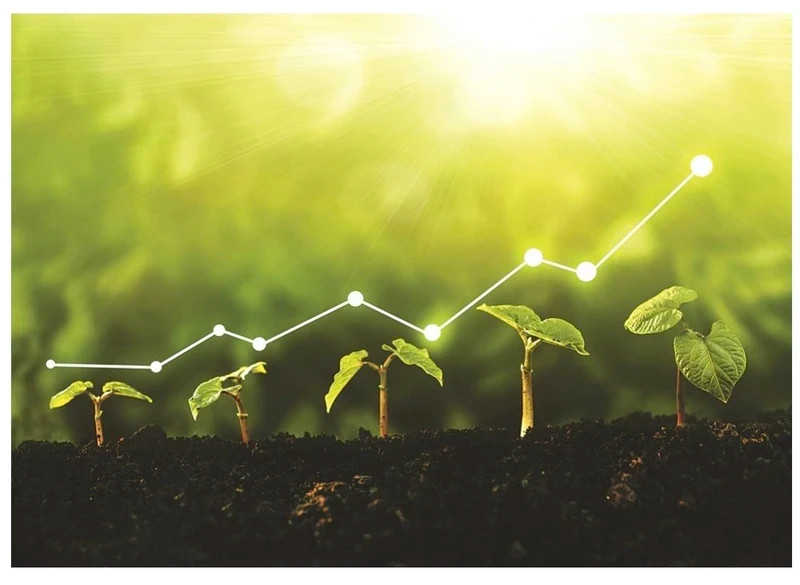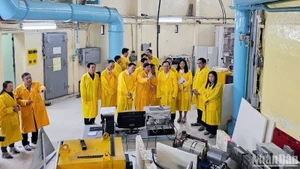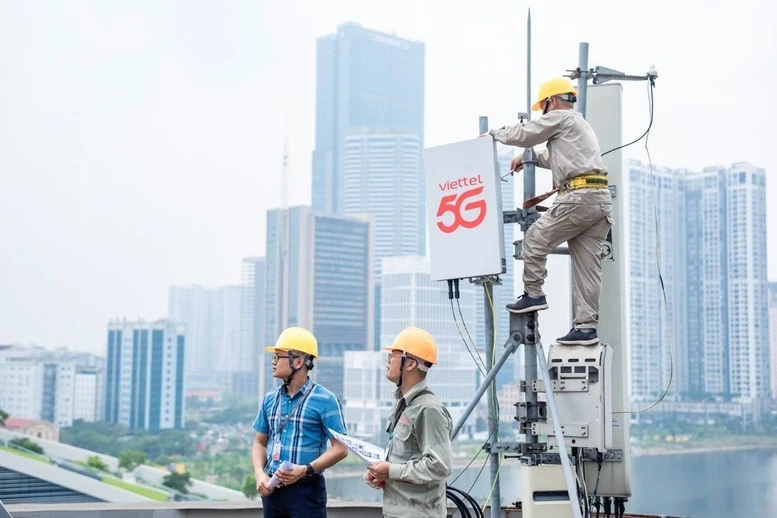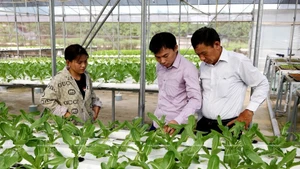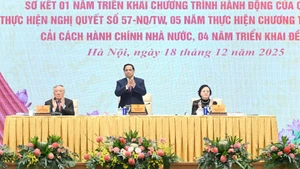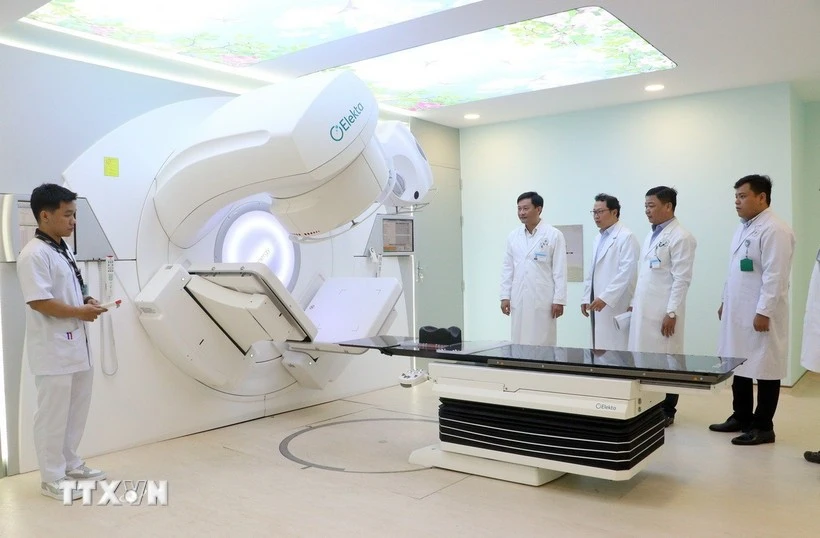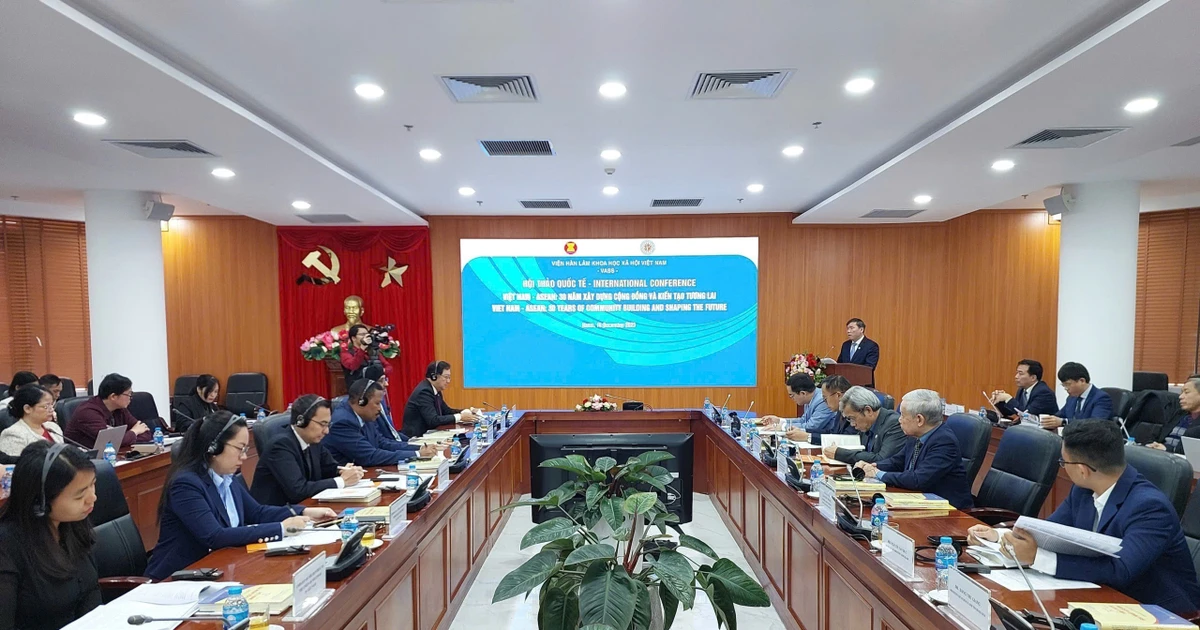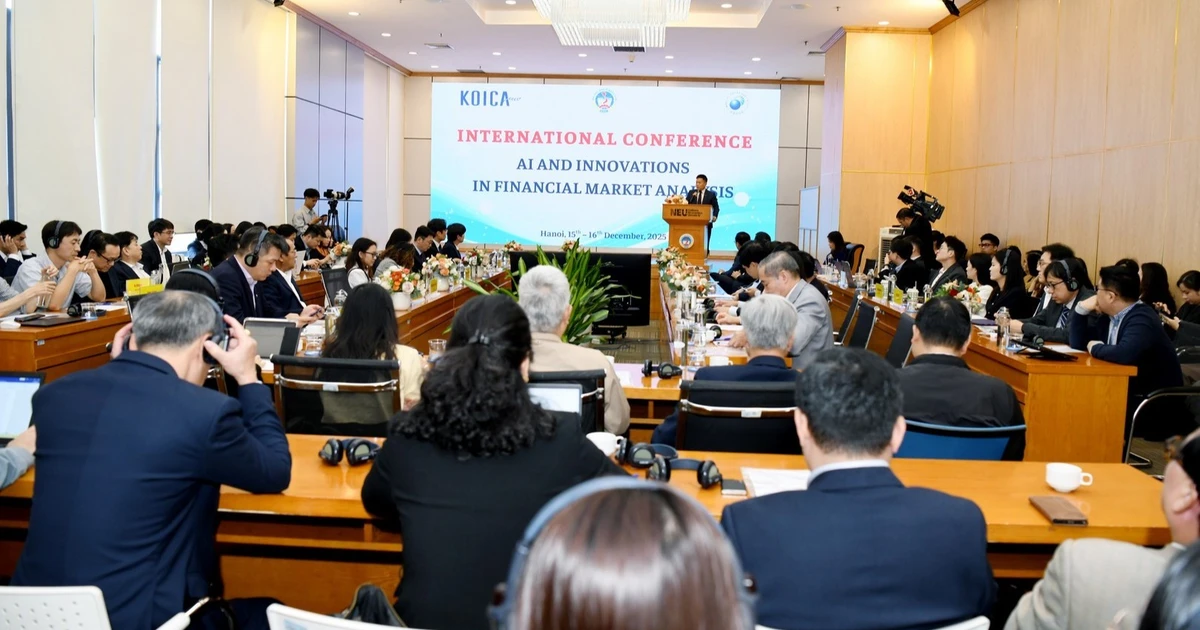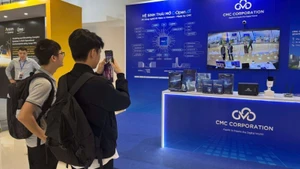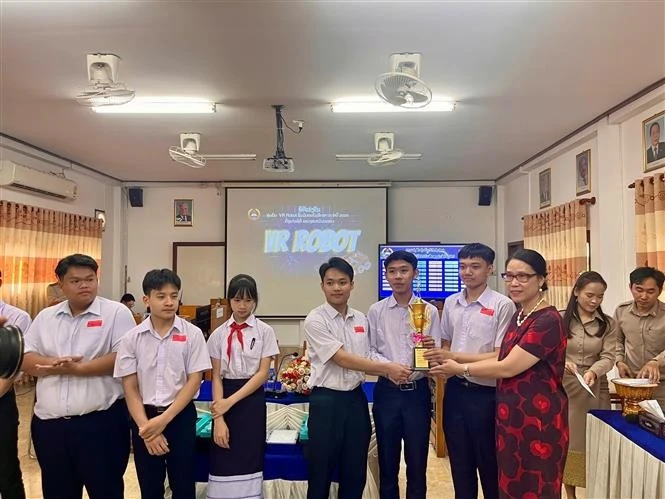These efforts not only help businesses enhance their competitiveness but also contribute to the country’s sustainable development goals.
From green production models to industrial zone models
Since its inception, Musa Pacta One-Member Limited Liability Company has collaborated with Khai Thai Cooperative (Phu Xuyen District, Ha Noi) to produce banana fibre products. The banana fibres — which are made from banana trunks — currently sell on the international market for around 3.5 USD/kg.
The water and residue from the trunks are reused as irrigation water and bio-fertiliser; the banana residue is turned into animal feed, growing media, and more.
Director Bui Khanh Dung stated that the enterprise has cooperated with ten cooperatives in Ha Noi and northern provinces, investing in three major factories producing banana fibre and other banana-derived products. These ten cooperatives are currently creating jobs for as many as 600 workers, depending on the time.
In 2021, Ha Diep Limited Liability Company (Bac Kan City) invested capital to build a workshop and a large-scale machinery system for processing golden camellia tea.
Director Ha Minh Doi said the company has invested in and partnered to cultivate more than 15 hectares of golden camellia in Don Phong Commune (Bach Thong District) and Dong Thang Commune (Cho Don District). Modern drying technology is applied to produce whole-flower golden camellia tea, preserving its shape and colour almost intact from its fresh state and retaining all its valuable micronutrients.
To date, both the whole-flower tea and tea bags have been recognised as 4-star One Commune One Product (OCOP) products, available in major supermarket chains nationwide at high prices.
TNG Investment and Trading Joint Stock Company, the largest garment exporter in Thai Nguyen Province, has recently inaugurated and put into operation a rooftop solar power system at its Viet Thai Garment Branch.
The system has a capacity of 998 kWh and a total investment value of 16 billion VND, meeting around 50% of the facility's electricity demand. Each month, it generates electricity worth nearly 200 million VND. Additionally, this system helps reduce CO₂ emissions by about 800 tonnes annually.
Board Chairman Nguyen Van Thoi stated: “The company has used modern simulation software in design and replaced coal-fired boilers with electric boilers to reduce CO₂ emissions.
As a result, our garment factories located in the industrial clusters of Son Cam, Vo Nhai, Nam Hoa, and the cotton production plant have all been certified as green factories.”
At Thang Long Vinh Phuc Industrial Park, the developer — Sumitomo Group — has allocated 20% of the land for green spaces, lawns, ornamental plants, water surfaces, and roads. It has also invested in constructing five rental workshops designed for high-tech projects with minimal environmental impact.
The industrial park has invested in a centralised wastewater treatment system with a processing capacity of 9,000 m³/day and night, capable of achieving Grade A water quality according to Viet Nam’s environmental technical standards. A solar power system with a capacity of 4 MWp has also been installed, helping investors reduce both production costs and CO₂ emissions.
In addition, localities are making efforts to attract strategic investors and environmentally friendly projects to industrial clusters, with a focus on green FDI while limiting projects that cause environmental pollution.
Supporting enterprises in the green transition
Given the increasingly stringent requirements of export markets, the biggest challenge for industrial enterprises adopting green growth models is the high initial investment cost, which demands substantial capital, especially for small and medium-sized enterprises.
Many companies lack the capacity to access preferential loans or do not meet the strict criteria to access support funds from the government and international organisations.
In Ha Noi, more than 60% of industrial enterprises have not adopted advanced production technologies or have only implemented basic energy-saving measures.
To address this issue, many businesses have proposed that the government introduce strong support policies on tax, credit, and human resource training to invest in modern machinery and technology for green and circular production.
Director of Musa Pacta Bui Khanh Dung proposed that regulatory bodies offer preferential tax and credit policies for businesses transitioning to green models, investing in clean technologies, and using sustainable energy in production.
In addition, he suggested support for transferring research and scientific-technological applications relating to green transition to businesses, enabling them to access and implement the transformation effectively.
Vinh Phuc Province has issued a plan to attract strategic investors until 2030, aiming to successfully bring in large-scale projects, strategic investors, and multinational corporations.
Tran Duy Dong, Chairman of the Vinh Phuc Provincial People’s Committee, stated that the province is working alongside businesses to implement sustainable green development solutions, specifically supporting the Vinh Phuc ICD Logistics Centre project with a vision to become the first inland port in Asia to achieve net-zero emissions by 2040. The province is also collaborating with Honda Viet Nam to implement measures to reduce emissions during production activities.
In Thai Nguyen Province, along with a selective FDI attraction policy for industrial zones, the Provincial People’s Committee has issued a Green Growth Action Plan for the 2021–2030 period.
The plan aims to exploit and use resources efficiently, prevent natural disasters, respond to climate change, protect the environment and biodiversity, and realise the goal of green growth with low carbon emissions, achieving net-zero emissions by 2050.
To address potential challenges on the path to "greening", Dr Nguyen Sy Dung, former Deputy Director of the National Assembly Office, stated that localities need to integrate net-zero emission goals into socio-economic and urban development planning. Specifically, this includes building eco-urban areas and organic agricultural zones combined with renewable energy, and expanding urban green spaces.
It is essential to apply green criteria in industrial development while encouraging businesses to reduce emissions and use clean energy. Provincial and municipal master plans for the 2021–2030 period should prioritise the development of low-emission economic sectors, leveraging solar and wind energy.
